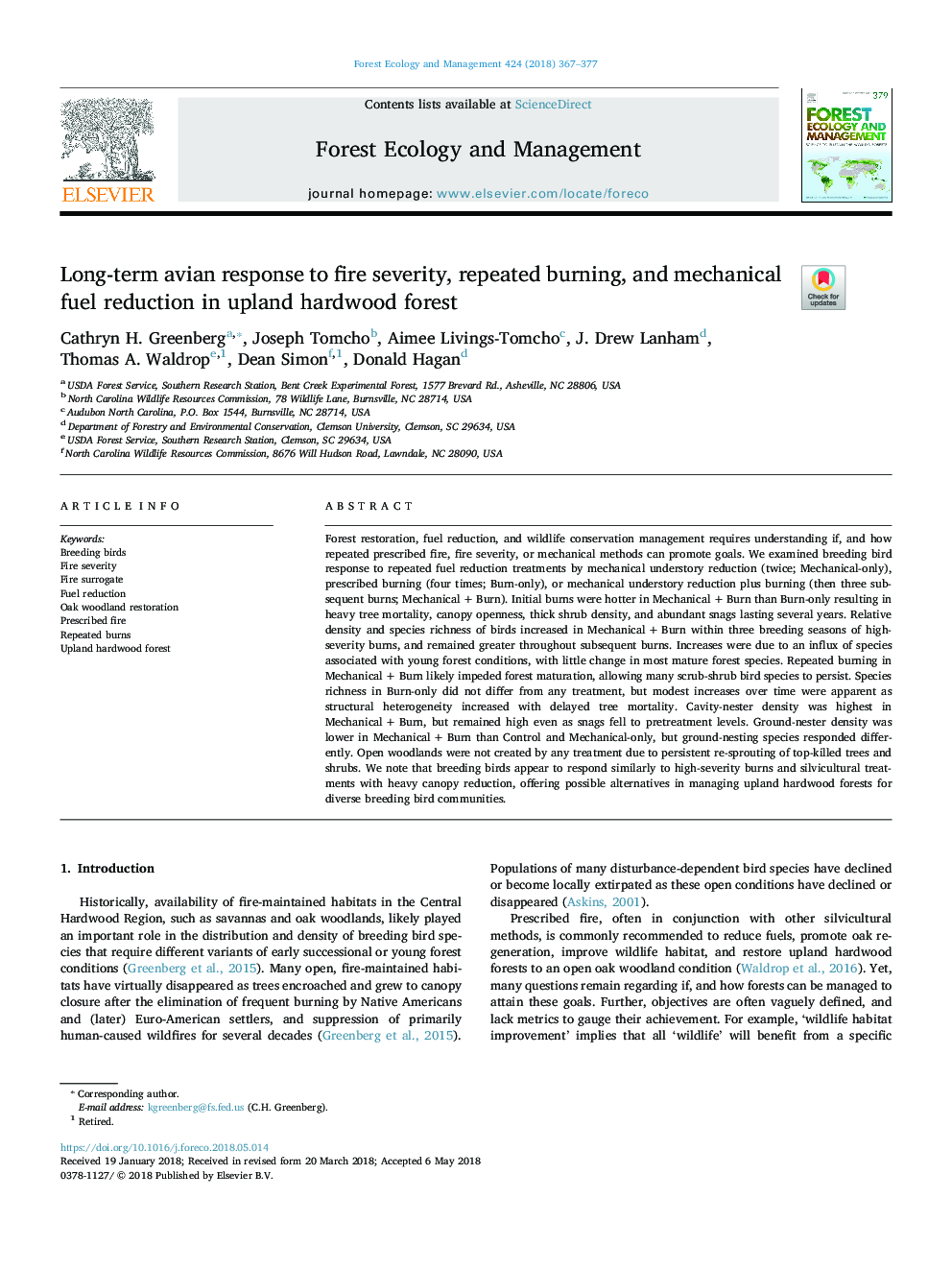| کد مقاله | کد نشریه | سال انتشار | مقاله انگلیسی | نسخه تمام متن |
|---|---|---|---|---|
| 6541611 | 1421336 | 2018 | 11 صفحه PDF | دانلود رایگان |
عنوان انگلیسی مقاله ISI
Long-term avian response to fire severity, repeated burning, and mechanical fuel reduction in upland hardwood forest
ترجمه فارسی عنوان
پاسخ بلند مدت پرندگان به شدت آتش سوزی، سوزاندن مکرر و کاهش سوخت های مکانیکی در جنگل های چوب جنگلی بلند
دانلود مقاله + سفارش ترجمه
دانلود مقاله ISI انگلیسی
رایگان برای ایرانیان
کلمات کلیدی
پرورش پرندگان، شدت آتش سوزی، آتش جایگزین، کاهش سوخت، بازسازی بلوط بلوط، آتش اعلام شده، سوختگی های تکراری، جنگل جنگل ارتفاعی،
موضوعات مرتبط
علوم زیستی و بیوفناوری
علوم کشاورزی و بیولوژیک
بوم شناسی، تکامل، رفتار و سامانه شناسی
چکیده انگلیسی
Forest restoration, fuel reduction, and wildlife conservation management requires understanding if, and how repeated prescribed fire, fire severity, or mechanical methods can promote goals. We examined breeding bird response to repeated fuel reduction treatments by mechanical understory reduction (twice; Mechanical-only), prescribed burning (four times; Burn-only), or mechanical understory reduction plus burning (then three subsequent burns; Mechanicalâ¯+â¯Burn). Initial burns were hotter in Mechanicalâ¯+â¯Burn than Burn-only resulting in heavy tree mortality, canopy openness, thick shrub density, and abundant snags lasting several years. Relative density and species richness of birds increased in Mechanicalâ¯+â¯Burn within three breeding seasons of high-severity burns, and remained greater throughout subsequent burns. Increases were due to an influx of species associated with young forest conditions, with little change in most mature forest species. Repeated burning in Mechanicalâ¯+â¯Burn likely impeded forest maturation, allowing many scrub-shrub bird species to persist. Species richness in Burn-only did not differ from any treatment, but modest increases over time were apparent as structural heterogeneity increased with delayed tree mortality. Cavity-nester density was highest in Mechanicalâ¯+â¯Burn, but remained high even as snags fell to pretreatment levels. Ground-nester density was lower in Mechanicalâ¯+â¯Burn than Control and Mechanical-only, but ground-nesting species responded differently. Open woodlands were not created by any treatment due to persistent re-sprouting of top-killed trees and shrubs. We note that breeding birds appear to respond similarly to high-severity burns and silvicultural treatments with heavy canopy reduction, offering possible alternatives in managing upland hardwood forests for diverse breeding bird communities.
ناشر
Database: Elsevier - ScienceDirect (ساینس دایرکت)
Journal: Forest Ecology and Management - Volume 424, 15 September 2018, Pages 367-377
Journal: Forest Ecology and Management - Volume 424, 15 September 2018, Pages 367-377
نویسندگان
Cathryn H. Greenberg, Joseph Tomcho, Aimee Livings-Tomcho, J. Drew Lanham, Thomas A. Waldrop, Dean Simon, Donald Hagan,
